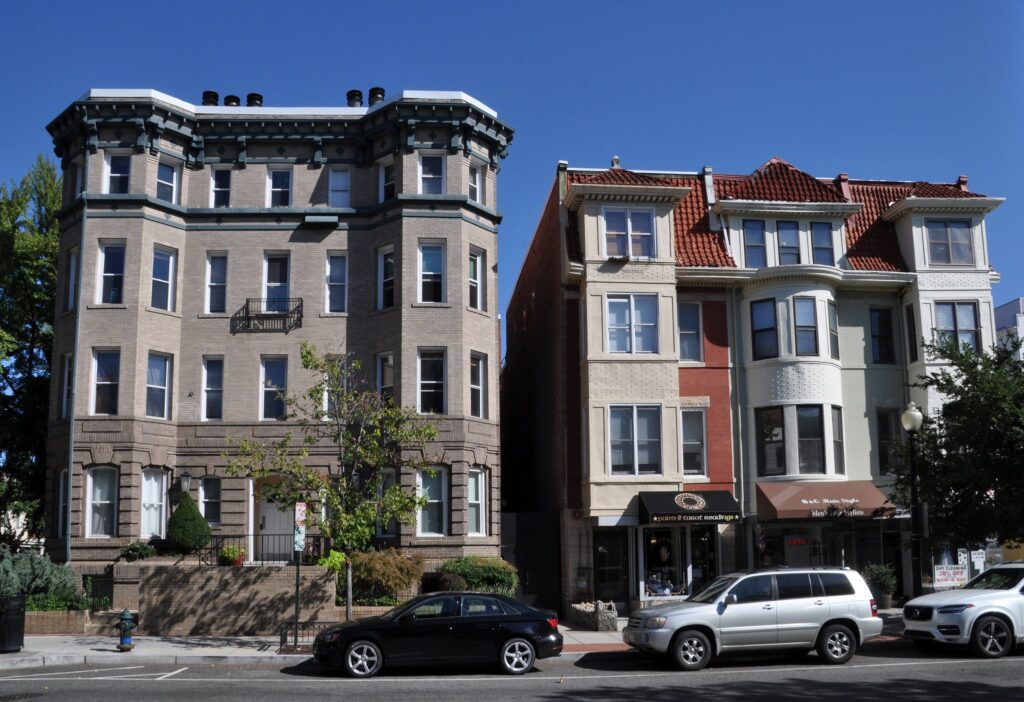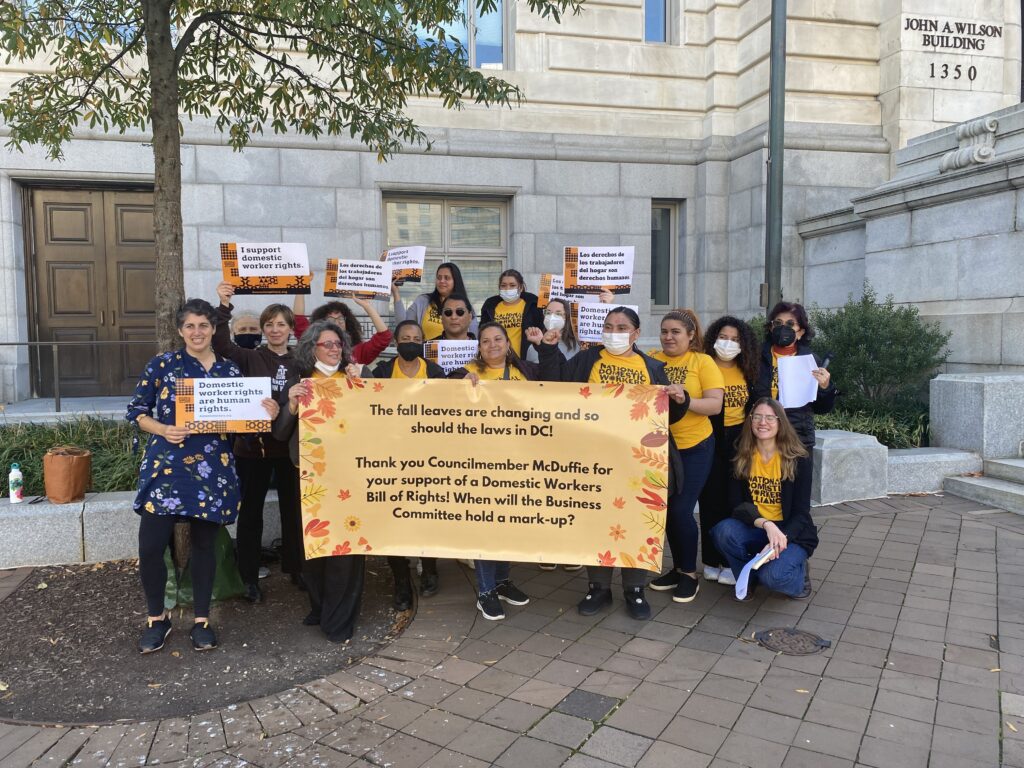More than 1,000 families who have stayed in the rapid rehousing program (RRH) beyond its usual time limit due to the pandemic are receiving an official extension — and some may get an extra reprieve along with job training.
No one in the RRH program will lose their rental subsidy until they are given a minimum of six months’ notice, according to Laura Zeilinger, director of the D.C. Department of Human Services (DHS). Additionally, 300 families living in RRH will be selected in fiscal year 2022 to participate in a new career pilot program, which will allow them to stay in place for five years.
The news comes as the city’s latest approved budget contains hundreds of millions of additional dollars for a broad range of housing programs, but no increased funding for families living in RRH.
RRH is a short-term subsidy that pays a portion of a family’s rent for a market-rate apartment over the course of a year, with the possibility of a six-month extension. When the city enacted a moratorium on evictions at the start of the pandemic, it protected any families living in RRH who were unable to take over the full rent for their apartment when the RRH subsidy ran out. In fiscal years 2016 and 2017, only 60% of all families whose subsidy ended were able to maintain their housing independently, according to a 2017 report by the Washington Legal Clinic for the Homeless.
The District continued to pay its portion of the monthly rent for RRH recipients for the duration of the public health emergency — resulting in many more families in the program at once than the city had budgeted for in FY 2021.
But when Mayor Muriel Bowser ended the public health emergency order last month, families living in RRH began to ask when they would be required to leave the program. Jessica Crawford, for one, started to prepare for what she felt was an inevitable eviction, having lived in RRH for 30 months. She moved out of her bedroom, packed her belongings into big plastic containers and cardboard boxes, and took to sleeping in the living room with her infant daughter. With no news from her case manager, Crawford felt like it was only a matter of time.
The new guidance on six-month notices is meant to provide families with sufficient time for planning their next steps, whether it involves transitioning to another housing program or securing a home on their own without help from the city.
According to Zeilinger, the timeline for individual families may vary depending on their circumstances. There is no fixed date as to when families should expect to receive their six-month notices.
“There is no one-size-fits-all or one answer to what people need,” Zeilinger explained.
Some families who have been in the program for longer than 18 months may be eligible for another housing program such as permanent supportive housing. To aid these families in their transition from RRH, case managers will be retrained to offer them the type of support and advice they will need, Zeilinger said. DHS will also provide case managers with a written guide that helps families identify the full set of available services.
“We want to be really clear about what families can expect from the program,” Zeilinger said, adding that the current draft includes information about access to job training, employment opportunities, and how to report issues with housing conditions.
A planned tax hike on high-income earners that is expected to raise hundreds of millions more for housing subsidy programs will expand the range of offerings available to people in search of housing — options that will be outlined in the new document.
In addition to creating the guide, Zeilinger said, DHS will also be piloting a new program that will allow 300 RRH participants to remain in place for five years — five times the traditional RRH time limit — as they develop skills for new careers.
While details about the training are still being worked out, the goal of the pilot is to give families the added security of not having to worry about losing benefits as they grow their earnings, a problem that is often described as a “benefits cliff.”
In income-based subsidy programs such as RRH, the portion that families pay toward their monthly rent rises as they earn more money. As a result, these programs don’t necessarily enable participants to save money as they stabilize or increase their income.
“So, it sometimes creates an impossible choice or a penalty for people when they earn because they will lose, for example, a housing subsidy or a child care subsidy,” Zeilinger said.
DHS will pay the initial value of the RRH subsidy for the duration of the pilot program so families will not experience a loss in benefits as they get on their feet.
The pilot program is set to launch during FY 2022, which starts Oct. 1. The new guide will also be completed by then to provide families and case managers with information about available resources.
Zeilinger added that ideas for the career pilot come directly from feedback DHS received from families in its housing programs.
Crawford, the single mother who has been in rapid rehousing since January 2019, has doubts as to whether she will actually receive the six-month notice, but believes the new career pilot program could work if implemented properly.
“The problem is not knowing what’s going on because there’s just so much lack of communication,” Crawford said. “I just don’t see them letting everyone know or giving them six months’ notice.”
Despite having been in RRH for so long, Crawford said, she is still unclear who her case manager is and doesn’t expect to hear from anyone soon.
Early last year, the program stopped paying its portion of Crawford’s monthly rent, accusing her of moving to another state. The claim is disputed by both Crawford and her property manager, who argue that she never moved.
Recently, however, the city approved her application for help via STAY DC – an emergency financial relief program run by the District to help tenants stay current on rent – and paid off a large portion of her balance. She says her property management company is helping her try to resolve the issue with the city.
[Read more: With the public health emergency ending, what does that mean for evictions?]
But when it comes to rapid rehousing, Crawford said there is a disconnect between those who establish housing policies at DHS and those who implement them. While department staff may have good intentions, she said they don’t always deliver on their ideas.
For instance, Crawford said her current apartment didn’t meet code when she first moved in. This is despite the requirement that homes to be rented with the help of a rapid rehousing subsidy be inspected to ensure they meet HUD standards prior to families moving in.
Kevin Ratiff Jr., who is the father of Crawford’s daughter and is certified in building maintenance and refrigeration, said Crawford’s unit was far from meeting the standards for inspection when he helped her move in. Ratiff said he noticed multiple code violations, such as an electrical socket that was hanging out of a wall.
When asked about allegations regarding poor conditions of properties at RRH units, Zeilinger reiterated her department’s policy: “Everybody deserves to have adequate, safe, healthy housing conditions. And we’re paying for units with the expectation that that is what is being offered.”
RRH participants who have issues with the conditions of their units should address them with their case management, Zeilinger said.
Notwithstanding department policy regarding inspections, Jewel Stroman — a community housing activist who has worked with many families in rapid rehousing — said that poor housing conditions are a persistent problem for subsidy recipients.
She said she has long advocated for doing two housing inspections — one prior to moving in and another a few weeks after — to help with spotting problems that might not be immediately evident.
When asked about the new career pilot, Stroman said she is cautiously optimistic.
“I’m happy to hear of this — a lot of advocates have been pushing for this,” she said.
Since 2018, Stroman and other housing advocates and activists have lobbied DHS to give families in RRH more time in the program to work on career skills. “Five years was the timeframe that we specifically asked for,” she said.
Stressing the importance of adequate resources and proper case management, Stroman said the success of a new program like this will depend on how it’s structured, including decisions regarding eligibility and screening of potential participants.
During the pandemic, she’s seen programs like RRH deteriorate as an already thin number of case managers struggle to support an ever-growing number of clients.
“[Even] before the pandemic was going on, we had families that basically didn’t know who their caseworkers were for months,” Stroman said.








